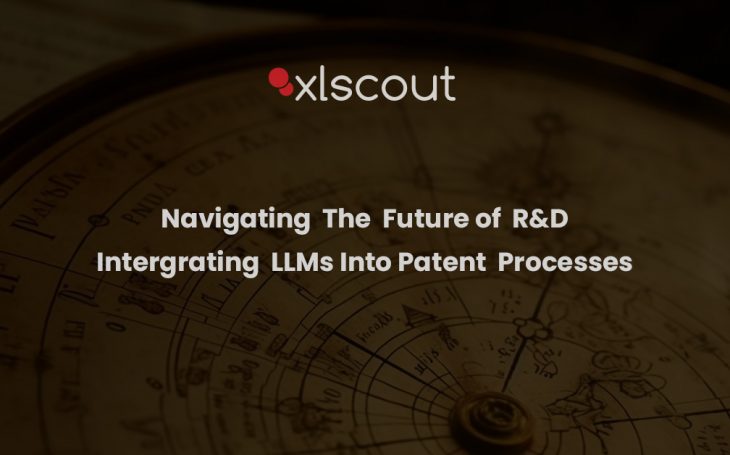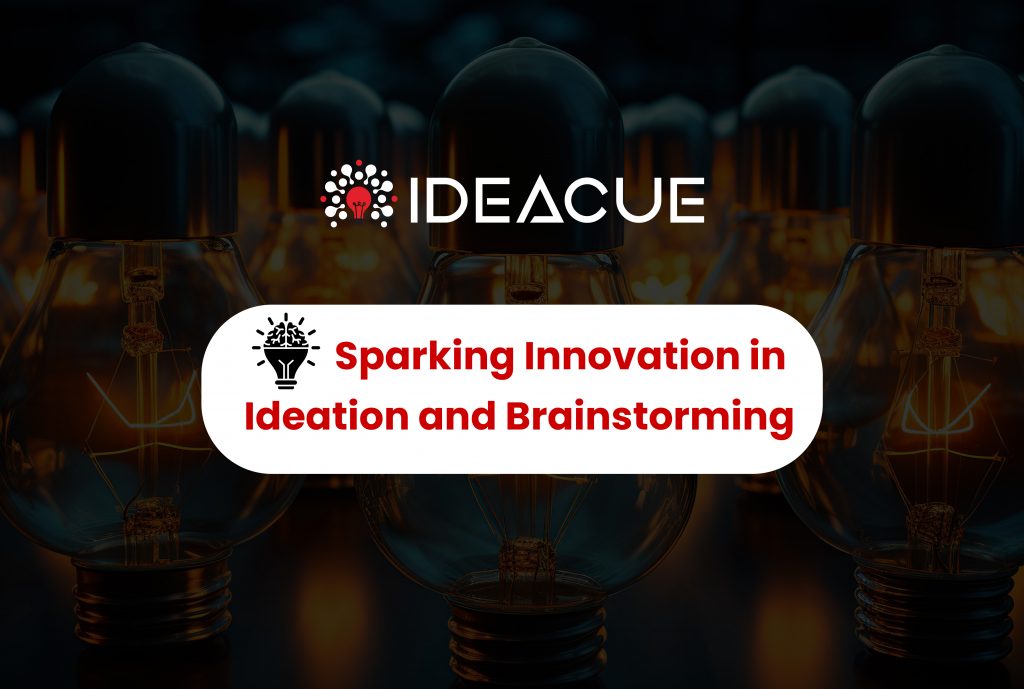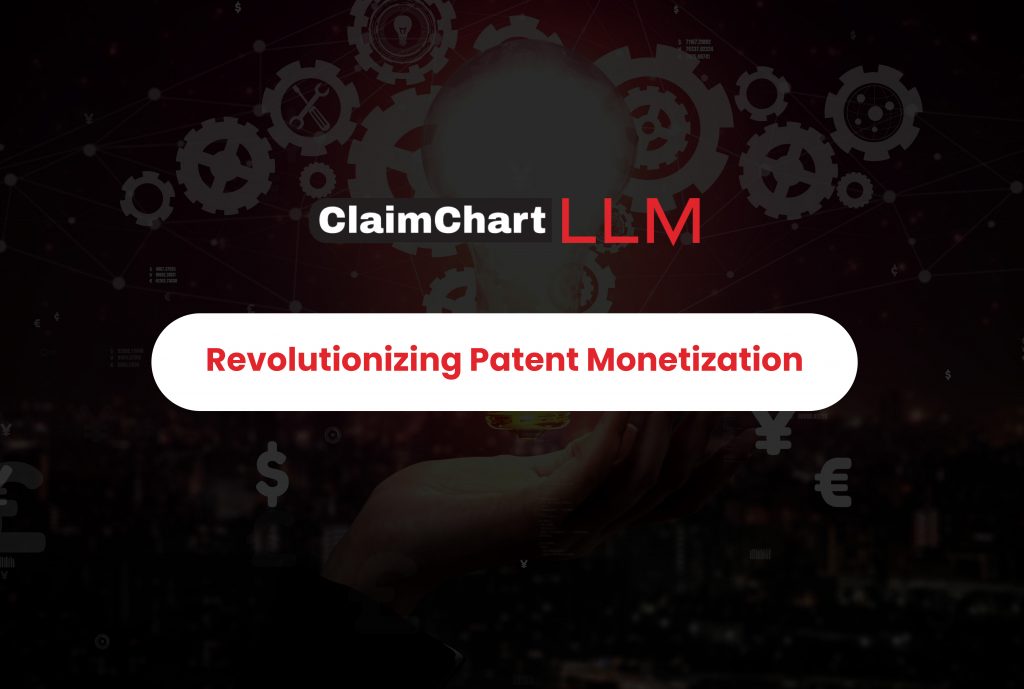
Introduction to Large Language Models (LLMs) in R&D and Patenting
In the dynamic realm of Research and Development (R&D) and patenting, Large Language Models (LLMs) are emerging as pivotal tools, reshaping traditional methodologies. LLMs are advanced AI systems trained on vast datasets, enabling them to understand, generate, and manipulate human language with remarkable proficiency.
The integration of LLMs into R&D and patenting processes marks a significant shift towards more efficient, innovative, and intelligent practices. In R&D, LLMs assist in brainstorming and conceptualizing new ideas. They analyze existing research and data to generate novel concepts or suggest improvements to current designs. This capability not only accelerates the ideation process but also ensures a broader and more diverse range of creative inputs, crucial for groundbreaking inventions.
In the patenting world, LLMs serve as invaluable assets. Their ability to swiftly process and analyze large volumes of patent literature and scientific documentation is transforming the landscape of patent searches. They can identify relevant prior arts, thus aiding in the assessment of a patent’s novelty and non-obviousness – key criteria in patentability.
Moreover, LLMs contribute significantly to patent drafting. They assist in formulating clear, concise, and legally robust patent claims and descriptions. By ensuring precision and compliance with patent laws, they reduce the likelihood of legal challenges and infringement issues.
In essence, LLMs are not just tools but partners in the journey of innovation. They enhance human capabilities, ensuring that R&D and patenting processes are not only more efficient and accurate but also more aligned with the rapidly evolving technological landscape. As we delve deeper into the era of AI, LLMs stand as testaments to the synergistic potential of human intelligence and machine learning, heralding a new age of invention and intellectual property management.
XLSCOUT: Pioneering AI-Driven Patent Solutions
In the ever-evolving landscape of intellectual property (IP) and research & development (R&D), XLSCOUT emerges as a trailblazer, harnessing the power of Artificial Intelligence (AI) to revolutionize patent workflows. XLSCOUT has established itself as an innovative leader in the IP domain, offering a suite of solutions that seamlessly integrate advanced Large Language Models (LLMs) and Generative AI technologies into the heart of patent processes.
At its core, XLSCOUT’s is transforming the way businesses, researchers, and IP professionals approach the lifecycle of a patent – from the initial spark of an idea to the final stages of patent monetization. Recognizing the complexity and challenges inherent in the patenting process, XLSCOUT has committed to making these tasks more efficient, accurate, and accessible through cutting-edge AI technology.
The foundation of XLSCOUT’s offerings lies in its unique AI platforms, each designed to cater to specific stages of the patent journey. For ideation and brainstorming, there’s Ideacue, a revolutionary platform that takes user-provided problem statements and invention disclosures and generates a spectrum of novel ideas to enhance the original invention. This AI-driven ideation process not only accelerates the creative phase but also ensures a more diverse and innovative set of solutions.
Drafting patent applications, a traditionally time-intensive and meticulous task, is streamlined through XLSCOUT’s Drafting LLM. This platform assists users in creating preliminary patent drafts by inputting claims or invention disclosures. Moreover, it features an intuitive AI chatbot that acts as a virtual assistant, offering real-time iterations to refine patent applications according to user specifications.
Finally, for patent monetization, XLSCOUT presents ClaimChart LLM, a transformative platform that redefines the approach to patent infringement searches. By generating AI-produced claim charts and Evidence of Use (EoU) charts, it maps potential infringements, assisting users in identifying licensing opportunities and streamlining patent monetization.
Ideacue: Sparking Innovation in Ideation and Brainstorming

In the realm of innovation and patent development, Ideacue stands out as a groundbreaking platform offered by XLSCOUT, specifically designed to redefine the process of ideation and brainstorming.
Ideacue sets itself apart by providing a unique, AI-driven approach to idea generation. At its core, the platform utilizes advanced Large Language Models (LLMs) & Generative AI to assist inventors, researchers, and companies in expanding upon their initial concepts. Users begin by inputting a description of the problem they aim to solve, along with their preliminary invention disclosure. Ideacue then takes these inputs and works its AI magic, generating a range of innovative ideas and suggestions that build upon and enhance the original concept.
What makes Ideacue particularly valuable is its ability to tap into a vast repository of data, patterns, and precedents in technology and patent literature. This enables the platform to offer not just any ideas, but highly relevant and potentially groundbreaking suggestions that are tailored to the user’s specific field and objectives. This process not only accelerates the ideation phase but also ensures that the ideas generated are both novel and feasible within the context of existing technologies and patents.
Furthermore, Ideacue fosters a more collaborative and dynamic brainstorming environment. Its AI-driven insights can stimulate new lines of thinking and inspire creative solutions that might not have been considered otherwise. This makes it an invaluable platform for teams looking to push the boundaries of innovation and stay ahead in competitive industries.
Drafting LLM: Streamlining Patent Application Creation

In the intricate world of patent applications, precision and clarity are paramount. Drafting LLM, a pioneering platform developed by XLSCOUT, is designed to streamline this exacting process, harnessing the power of Artificial Intelligence (AI) to aid inventors and IP professionals in crafting comprehensive and coherent patent drafts.
Drafting LLM marks a significant leap forward in the field of intellectual property management. This platform is not just a platform but a virtual collaborator that simplifies the daunting task of patent drafting. It employs advanced Large Language Models (LLMs) & Generative AI to generate preliminary patent drafts based on user inputs such as claims or invention disclosures. This AI-driven approach ensures that each draft not only adheres to the stringent requirements of patent applications but also aligns closely with the inventor’s original concept and intent.
One of the standout features of Drafting LLM is its AI chatbot. The platform includes an AI chatbot, acting as a virtual assistant, that offers real-time iterations. This interactive aspect of Drafting LLM enables users to refine their patent drafts dynamically, ensuring that the final document is both technically sound and legally robust.
Drafting LLM also significantly reduces the time and resources typically required for patent application preparation. By automating the initial drafting process and offering intelligent suggestions, it allows inventors and patent attorneys to focus more on the strategic aspects of patent filing, such as claims optimization and addressing potential legal challenges.
Furthermore, the platform is designed to be user-friendly and accessible, making it a valuable asset for both seasoned IP professionals and those new to patenting. Its intuitive interface and guided processes demystify the patent drafting procedure, making it more approachable and less intimidating.
ClaimChart LLM: Revolutionizing Patent Monetization

ClaimChart LLM, a cutting-edge offering from XLSCOUT, is transforming the landscape of patent monetization. This innovative platform leverages the power of Artificial Intelligence (AI) to streamline the complex process of identifying patent infringements and unlocking monetization opportunities. In the intricate world of intellectual property, ClaimChart LLM stands as a pivotal platform for patent holders, attorneys, and corporations, offering a sophisticated yet user-friendly solution for maximizing the value of patents.
At its core, ClaimChart LLM specializes in generating AI-powered claim charts and Evidence of Use (EoU) charts. These charts are crucial in the patent industry as they visually map out how a product or a service might infringe upon the claims of a patent. The traditional process of creating these charts is labor-intensive and time-consuming, often requiring deep technical and legal expertise. ClaimChart LLM revolutionizes this process by automating the generation of these charts, significantly reducing the time and effort involved.
The platform’s AI algorithms analyze vast amounts of data, including patent databases, product specifications, and technical documents, to accurately identify potential infringements. This capability is particularly valuable in today’s fast-paced tech landscape, where new products are constantly being developed and released. By swiftly pinpointing potential infringements, ClaimChart LLM empowers patent holders to take timely and strategic actions, whether it’s enforcing their patents or exploring licensing opportunities.
Beyond infringement detection, ClaimChart LLM plays a vital role in patent monetization strategies. It offers a clear, evidence-backed foundation for negotiations and legal proceedings, enhancing the credibility and strength of the patent holder’s position. This is crucial in maximizing the financial returns from patents, be it through litigation, licensing, or sale.
Ensuring Data Security: XLSCOUT’s Commitment to Protecting User Information

In today’s digital age, data security is a paramount concern for businesses and individuals alike. XLSCOUT recognizes the critical importance of safeguarding user data, and it places a strong emphasis on implementing robust security measures to protect sensitive information throughout its platforms. Here’s how XLSCOUT ensures data security:
User Data Protection in LLM Models
XLSCOUT is committed to ethical AI practices and user privacy. One notable aspect of this commitment is that XLSCOUT’s LLM models are not trained on user data. This means that any information or input provided by users to the platforms is not used to train or improve XLSCOUT’s AI models. By not utilizing user data for model training, XLSCOUT ensures that user information remains confidential and is not incorporated into the AI learning process. This approach not only protects user privacy but also aligns with best practices in AI ethics.
End-to-End Encryption
XLSCOUT employs state-of-the-art end-to-end encryption protocols to secure user data at every stage of interaction with its platforms. This means that from the moment a user submits their input to Ideacue, Drafting LLM, or ClaimChart LLM, through data processing, and until the final results are delivered, all communication and data transmission are encrypted. This encryption ensures that user data remains confidential and inaccessible to unauthorized parties, providing peace of mind to users concerned about data privacy.
In summary, XLSCOUT places data security and user privacy at the forefront of its operations. The implementation of end-to-end encryption and the commitment to not training LLM models on user data demonstrate XLSCOUT’s dedication to protecting sensitive information while delivering innovative and effective patent solutions. Users can confidently engage with XLSCOUT’s platforms, knowing that their data is handled with the utmost care and security.
The Future of Patent Workflows with LLMs: Trends and Predictions
The integration of Large Language Models (LLMs) into patent workflows is not just a fleeting trend but a harbinger of a transformative future in the intellectual property domain. As we look ahead, several trends and predictions emerge, highlighting how LLMs will continue to reshape patent processes.
We anticipate a more collaborative synergy between LLMs and human experts. As LLMs become more sophisticated, their role will shift from mere tools to active collaborators, providing insights and suggestions that complement human creativity and expertise. This synergy will not only enhance the quality of patents but also spur innovation.
The future also holds potential for LLMs in predictive analytics. By analyzing patent trends and technological advancements, LLMs could predict future innovation trajectories, guiding R&D investments and strategy.
However, this optimistic future is not without its challenges. Ensuring ethical use, addressing bias in AI models, and keeping pace with evolving legal frameworks will be crucial. Nevertheless, the future of patent workflows with LLMs is poised to be more efficient, innovative, and interconnected, ushering in a new era of intellectual property management.
Ethical Considerations and Compliance in AI-Driven Patenting
The integration of Artificial Intelligence (AI), particularly Large Language Models (LLMs), into patenting processes raises critical ethical considerations and compliance challenges. As AI transforms this domain, it’s imperative to navigate these issues with caution and responsibility.
One major ethical concern is the potential for AI to perpetuate or even amplify biases. LLMs are trained on vast datasets that may contain historical biases or imbalanced perspectives. In patenting, such biases could influence the direction of research and development, favoring certain fields or demographics over others. Ensuring that AI systems are trained on diverse, inclusive, and unbiased data is essential to prevent such skewing.
Furthermore, AI-driven patenting must comply with existing intellectual property laws, which were primarily designed for human-driven processes. The question of who owns the rights to an AI-generated invention or a patent draft— the AI developer, the user, or the AI itself—remains a legal grey area. Navigating these complexities requires a careful balance between leveraging AI’s capabilities and adhering to legal frameworks.
Data privacy and security are also paramount. Patent processes involve sensitive information, and AI systems must ensure the confidentiality and integrity of this data, complying with regulations like GDPR or HIPAA, as applicable.
Lastly, there is an ethical responsibility to use AI in ways that augment human capabilities rather than replace them. Ensuring that AI-driven patenting supports and enhances the work of human practitioners, rather than rendering them obsolete, is key to maintaining the integrity and human touch in the patenting process.
Navigating these ethical considerations and compliance issues is crucial for the responsible and effective integration of AI in patenting, shaping a future where technology enhances, rather than undermines, the principles of fairness, transparency, and innovation in the field.
Conclusion: The Evolving Landscape of R&D and Patents with AI Integration
The integration of Artificial Intelligence (AI), especially Large Language Models (LLMs), into the realms of Research and Development (R&D) and patenting, signifies a profound shift in how we approach innovation and intellectual property management. This evolution is not just a technological advancement but a paradigm shift in the conceptualization, development, and protection of new ideas.
AI’s impact on R&D is multifaceted. It accelerates the ideation process, offering novel insights and combinations that might not be immediately apparent to human minds. This augmentation of human creativity with AI’s computational power has the potential to lead us into uncharted territories of innovation, fueling advancements in various fields at an unprecedented pace.
In the world of patents, AI, particularly LLMs, is revolutionizing processes from search and analysis to drafting and compliance. The efficiency and precision brought by AI in identifying relevant prior art, drafting comprehensive and legally robust patent applications, and ensuring compliance with intricate patent laws, mark significant strides towards a more streamlined and effective patenting process.
However, this transition is not without its challenges. Ethical considerations, data biases, transparency, and legal compliance are hurdles that need careful navigation. The success of AI integration in patent workflows largely depends on how these challenges are addressed. It’s imperative to strike a balance between leveraging AI’s capabilities and maintaining the integrity and human-centric approach fundamental to R&D and patenting.
Looking forward, the landscape of R&D and patents with AI integration is poised for continuous evolution. As AI technologies become more sophisticated and their applications more widespread, we can expect further enhancements in efficiency, creativity, and precision in these fields. This evolution promises not just improved methodologies but potentially a redefinition of the very nature of innovation and intellectual property in the AI age. The key lies in embracing this change responsibly, ensuring that AI serves as a complement to human expertise, driving forward the frontiers of human ingenuity.

